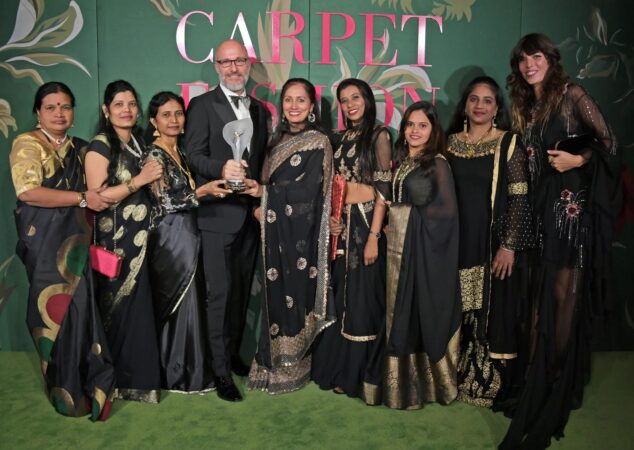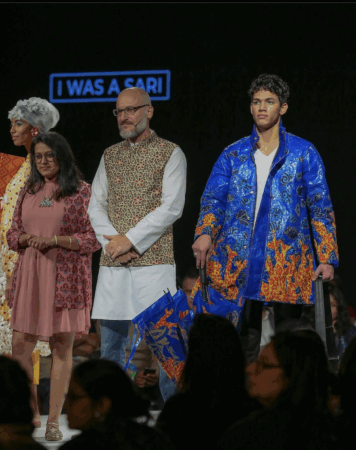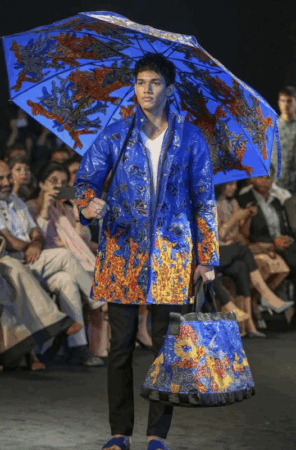I Was A Sari: Sarees Of Yesterday, Dreams Of Tomorrow
Sarees of Yesterday, Dreams of Tomorrow
By Athira Anilkumar Nair
In the bustling heart of Mumbai, a quiet fashion revolution is taking shape. ”I Was a Sari”, the brainchild of Italian entrepreneur Stefano Sonari, founded in 2015, is a brand that gives new life to second-hand saris, transforming them into contemporary fashion pieces.
In a country where fashion waste is rapidly growing, repurposing saris isn’t just a creative choice; it’s a response to a growing crisis. Fashion waste is a mounting issue across India, where millions of tonnes of textiles are discarded each year, contributing to overflowing landfills and environmental degradation. By transforming second-hand saris into contemporary fashion, “I Was a Sari” offers a scalable solution, its commitment to waste minimisation has already diverted over 2 million square meters of fabric from landfill over the past ten years, turning potential waste into purposeful design.
Yet the brand’s impact goes beyond environmental concerns. Rooted in sustainability, zero-waste practices, and social impact, it is as much about empowering communities as it is about reimagining fabric.
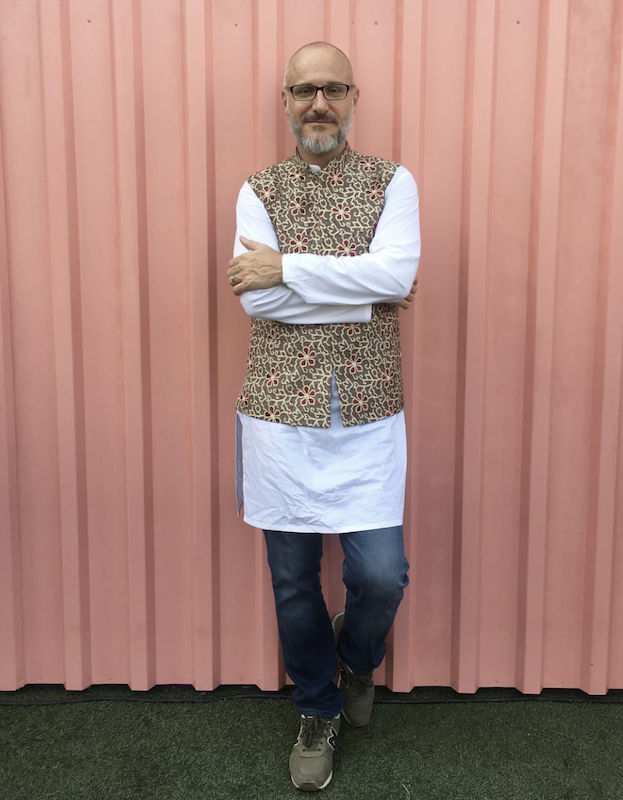
Drawing on his Milan fashion background, Stefano Sonari envisioned a brand that would employ women in stitching and create meaningful products. Today, the brand breathes new life into second-life fabrics, transforming them into stylish, modern garments. In the Indian garment industry typically dominated by men, Sonari saw an opportunity to train and empower women, making a significant social impact. Sitting down with Chief Officer Smitha, we explored how the brand reimagines the existing, embraces social enterprise, and builds powerful collaborations with partners like Gucci.
Reimagining the Existing
The brand repurposes saris into a diverse range of items, from accessories to sleepwear, with a design process grounded in sustainability and resourcefulness. Each piece begins with the careful selection of second-life fabrics, working within the constraints of the material to find creative solutions. Limitations aren’t seen as setbacks, but as opportunities for innovation.
“Unfortunately, when it comes to upcycling, there is a really huge challenge: you’re not just working with materials that already exist, you’re working with materials that have existed, have been used, and are now second-hand.”
It’s a reality that shapes every stage of the brand’s process. For Sonari and his team, building and scaling “I Was a Sari” as an upcycled fashion brand has presented challenges, particularly given the artisanal nature of its production. Each product is one-of-a-kind and handcrafted by women who are not professional garment workers. “The biggest challenge in upcycling is working with pre-existing, second-hand materials,” Smitha explains, “because they may have flaws—making it difficult to scale.”
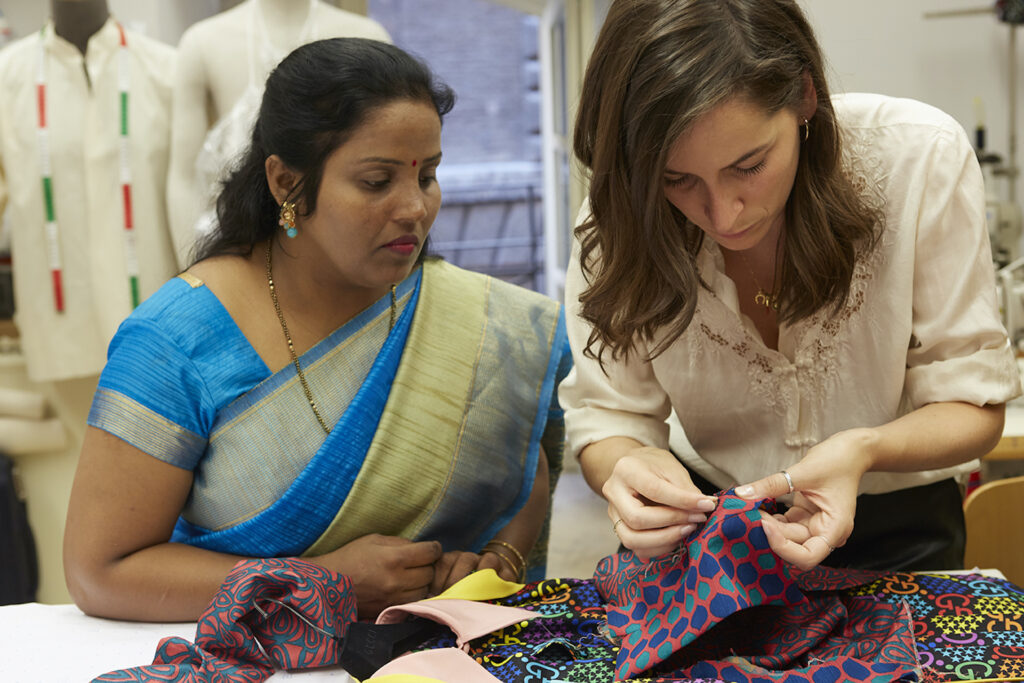
Walking through their design process, the complexities of the product process to transform these discarded Saris became apparent, yet even in the face of these challenges, the brand’s commitment to work with existing materials, extends even to repurposing the smallest fabric remnants. Leftover materials (chindi) are repurposed into jewellery, small pouches, or fillings. Some of the scraps are donated to a nonprofit for organic sanitary pad fillings for women in rural India.
Operating on the values of sustainability, zero-waste practices, and social impact, this commitment extends to avoiding new materials harmful to the environment, such as plastic lamination and cheap plastic zippers. They prefer using metal or leftover cotton, even if it means higher costs.
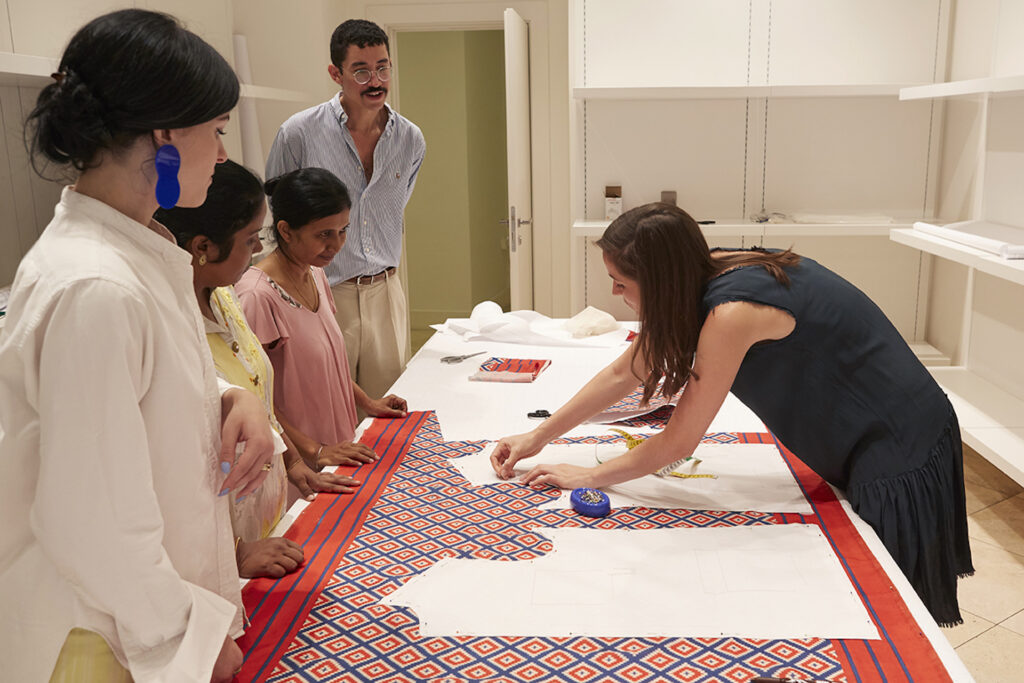
Winning the Circular Design Challenge at Lakmé Fashion Week marked a turning point. As Smitha recalls, the recognition didn’t just boost visibility, it shifted perceptions. “The brand’s visibility within the fashion industry increased significantly, helping it to be recognised as a legitimate fashion brand committed to sustainability, rather than just a social impact project.”
This was swiftly followed by the green carpet Fashion awards in Milan further solidifying the brand’s position as a legitimate fashion brand committed to sustainability. Reflecting on the conversation, it was apparent that the power of “I was a Sari” lies not just in its products, but in the stories they carry. Every piece carries a past life, a unique story woven into its fabric.
The transformative journey of these Saris to their new life connects customers on an emotional level. Each piece embarks on a metamorphosis, and it is the transformation from discarded to new that deepens its value and sense of preciousness. The brand advocates the power of intersectionality within a sustainable, circular business model, showing how a garments life can extend beyond the workshop into the community.
Social Transformation
During our conversation, it was enlightening to discover how personally connected Sonari is to this mission, not just from a design perspective, but from a deeply human one. What stood out was the brand’s unwavering attention to detail in how it translates its core values into everyday practices. Since its founding the brand has collaborated with nonprofits that support income generation programs for women from underserved regions, providing training and flexible working hours.
“Our goal has always been the same that each of these pieces has to be made from the foundation, which is from pre-loved saris. And two, it has to be handcrafted by craftswomen,” says Smitha.
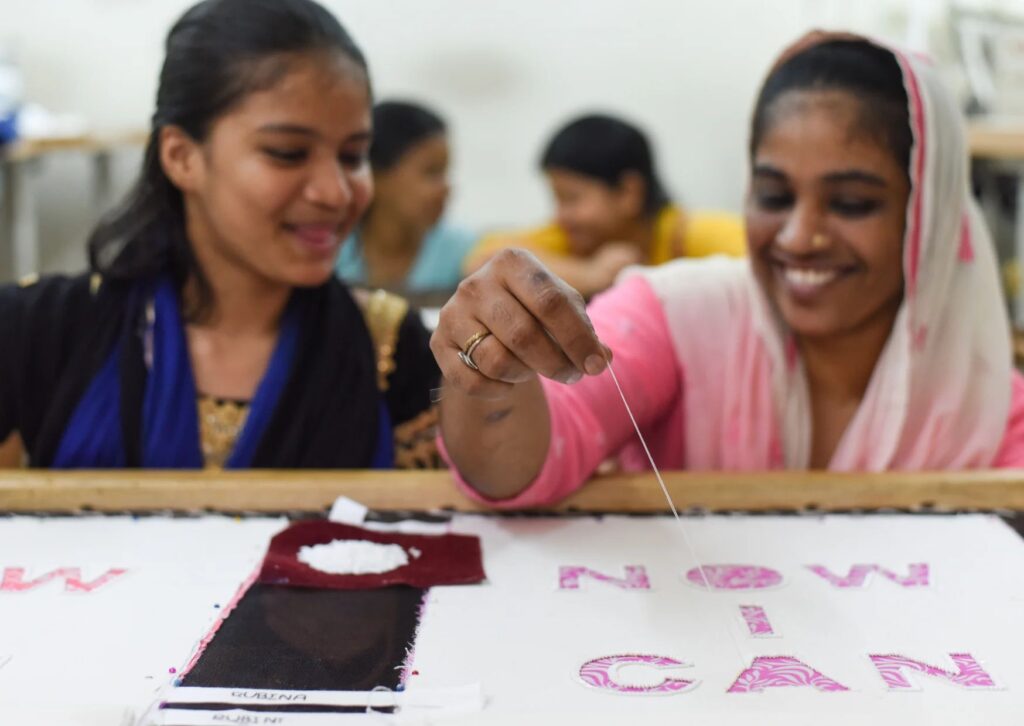
Our conversation revealed a deep-rooted commitment not only to sustainable design, but to social transformation. The brand committed to empowering women by creating lasting change in their lives, offers training, fair wages, and a supportive community. Long before the brand’s official launch in 2015, Sonari had been working with nonprofits supporting street and homeless children in Mumbai. It was during this time, between 2012 and 2013, that he had a pivotal realisation that empowering the mothers was key to creating sustainable change in the children’s lives, this insight would go on to shape the very foundation of I was a Sari, embedding social impact into its DNA from the start.
“It’s about creating opportunities through training, fair wages, and a strong sense of community, helping women from underprivileged backgrounds build skills, confidence, and a more secure future.’’
Often in Mumbai’s streets, I’ve seen glimpses of the quiet artistry of women whose creative hands bring fabric to life- talents too often overlooked. This part of the brand’s work resonated deeply with me. Their support system for craftswomen goes far beyond income. Collaborating closely with women artisans in Mumbai, many of whom start their careers with the company after relocating from villages or dropping out of school, the brand’s commitment extends beyond financial empowerment.
“For ‘I was a Sari,’ empowering our craftswomen goes beyond the workday. We believe in holistic welfare, providing not just employment, but crucial support systems like a Children’s Education Fund, medical insurance for their families, and essential counselling services for issues such as domestic violence and harassment,” emphasises Smitha.
This support also extends to the women’s families through vocational training opportunities for their children. Recognising the family responsibilities these women have, “I was a Sari” offers flexible work hours. While the artisans are not directly involved in the design process, their influence is deeply felt in the brand’s internal processes and operations. “The brand recognises the untapped talents of these women and conducts frequent projects with them,” Smitha notes. Their stories and experiences resonate strongly with customers, and the brand openly acknowledges these women as their heroes, celebrating their contributions and the transformative impact they have on the community.
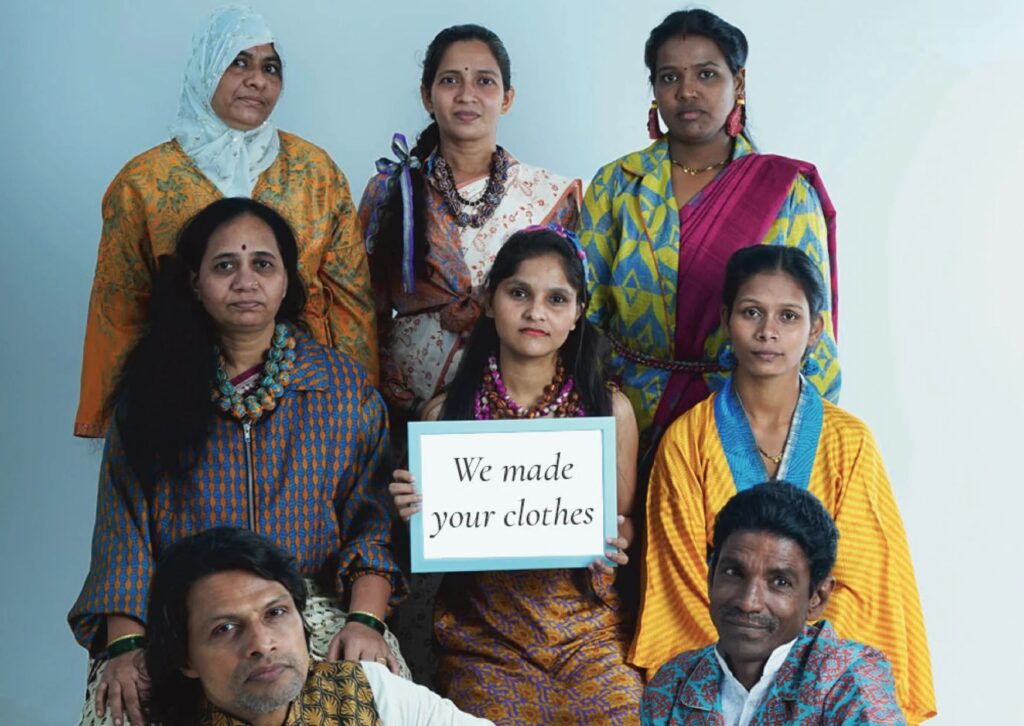
The Gucci Equilibrium Program
A notable collaboration for “I was a Sari” was The Gucci Equilibrium program, which focused on upcycling and social empowerment. The partnership began in 2018 with the goal of training Indian craftswomen in embroidery, a skill traditionally dominated by men. Together, they created a training module made freely available and for three years, Gucci procured Christmas gifts for VIPs and employees from “I was a Sari,” each year involving co-creation and idea exchange as part of the process.
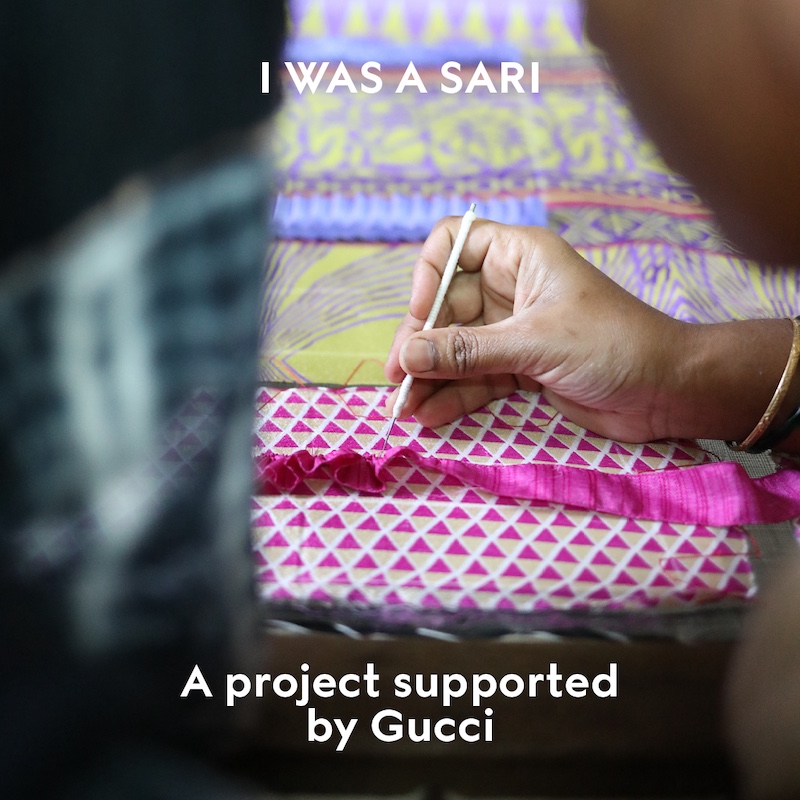
A particularly compelling project was the Christmas cheer box, featuring four Christmas ornaments crafted from leftover saris and scraps, including repurposed materials from previous Gucci orders with intricate embroidery inspired by artisans’ day-to-day stories. The collaboration with Gucci, a brand synonymous with premium quality craftsmanship and luxury fashion, significantly enhances the brand’s prestige.
Reflecting on the impact of the Gucci Equilibrium program, Smitha noted the broader recognition it brought: “So for us, their involvement and acknowledgement of the work we do creates a significant impact on other brands, which are big enough to make a difference, right?” This partnership brings visibility and encourages other luxury brands to acknowledge brands making a positive impact, redefining how major brands perceive craftsmanship and social impact.
Advice for Aspiring Brand Founders and Designers
I asked Smitha what advice she’d give to young designers. Her response was grounded, thoughtful, and full of practical wisdom. For aspiring sustainable designers, the brand emphasises the importance of prioritising ethical values and goals while staying grounded and aware of their limitations. Noting how essential it is to consider the entire lifecycle of a product, from resource consumption to disposal.
Smitha’s clear call to action for designers and brands alike is to create with intention, knowing that every item produced carries a future footprint. By embracing circularity, drawing creativity from constraints, and supporting artisan communities, fashion can become a force for both style and sustainability.
“Be very mindful about what you create. It needs to be something that is necessary for this world. Focus on circularity by leveraging pre-used fabrics, post-consumer waste, and leftover materials, and innovate with available resources,” advises Smitha.
At its core, during our interview, what stood out was the brand’s unwavering principle that fashion doesn’t need to contribute to more waste, it can lead through creative methods and a commitment to sustainability. This is evident through the brands transparency, collaboration, commitment to fair wages, and dedication to social transformation. Proving that ethical choices can be embedded into a brand’s DNA from the very beginning, reshaping our relationship with clothing and the planet.
